Nitrifying bacteria play a crucial role in converting ammonia to nitrite and then to nitrate, a process known as the nitrogen cycle. This cycle is essential for anyone keeping fish, as it ensures a balanced and healthy pond environment.
These beneficial bacteria need a wet surface to grow on, meaning the more wet surface area available, the more bacteria can thrive. This is why understanding and utilising biological filters, which support these bacteria, is vital.
Biological filters use media designed to maximise surface area, fostering bacterial growth and ensuring efficient waste processing.
Water is pumped through the filter media to ensure the bacteria have plenty of oxygen and to circulate all the pond water through the filter.
I recently created a video on this topic you can either watch the video or read this article.
Types of Biological Filter Media
Filter media, or filter designs prefer different flow rates. Certain media is also more suited to different applications. So let’s take a look at some of the more common types.
Bio balls
Bio balls are spherical, plastic filtration media designed with a large surface area to support the growth of nitrifying bacteria.
Bio balls work by providing a vast surface area for bacteria to colonise. When water flows through the bio balls, it passes over these bacteria, which then convert ammonia into nitrites and nitrites into nitrates.
Nitrates are less harmful and can be utilised by aquatic plants as nutrients.
Advantages of Using Bio Balls
- High Surface Area: The intricate design of bio balls offers an extensive surface area for bacteria to grow, making them highly efficient at biological filtration.
- Clog-Resistant: Unlike some other filter media, bio balls are less likely to clog, ensuring consistent water flow and filtration.
- Durability: Made from robust plastic, bio balls are long-lasting and can be reused indefinitely with proper cleaning.
- Takes up less space: A filter using bio balls will take up much less space than a bog filter and can still process plenty of nitrogen.
- High water flow: Because they can handle high flow rates I think they are the best filter media for waterfall filters.
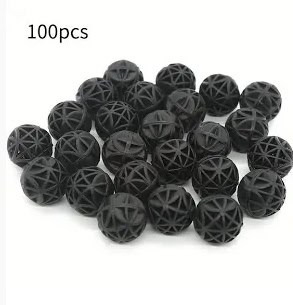
High flow filters will also leave behind nitrates, these will need to be absorbed by plants or diluted through water changes, keeping nitrates low will maintain optimal conditions for your fish.
While bio balls are great choice for biological filtration in high flow settings, however they are not the best choice for mechanical filtration, which is the removal of physical debris from the water.
To remove organic materials like broken down leaves and fish waste, bio balls should be used in conjunction with mechanical filter media like filter mats or sponges, these can better capture such suspended particulates.
If you want to purchase bio balls you can find a link on my pond products page.
I used bio balls on this DIY high flow filter that form the headwaters to my stream on my dream pond. Here’s a video if you’re interested.
Ceramic Media
When I think about ceramic media there are two types that spring to mind, clay balls or LECA and ceramic noodles.
Both are porous, so provide plenty of surface area for nitrifying bacteria. The clay noodles have a hollow centre and therefore provide additional surface area.
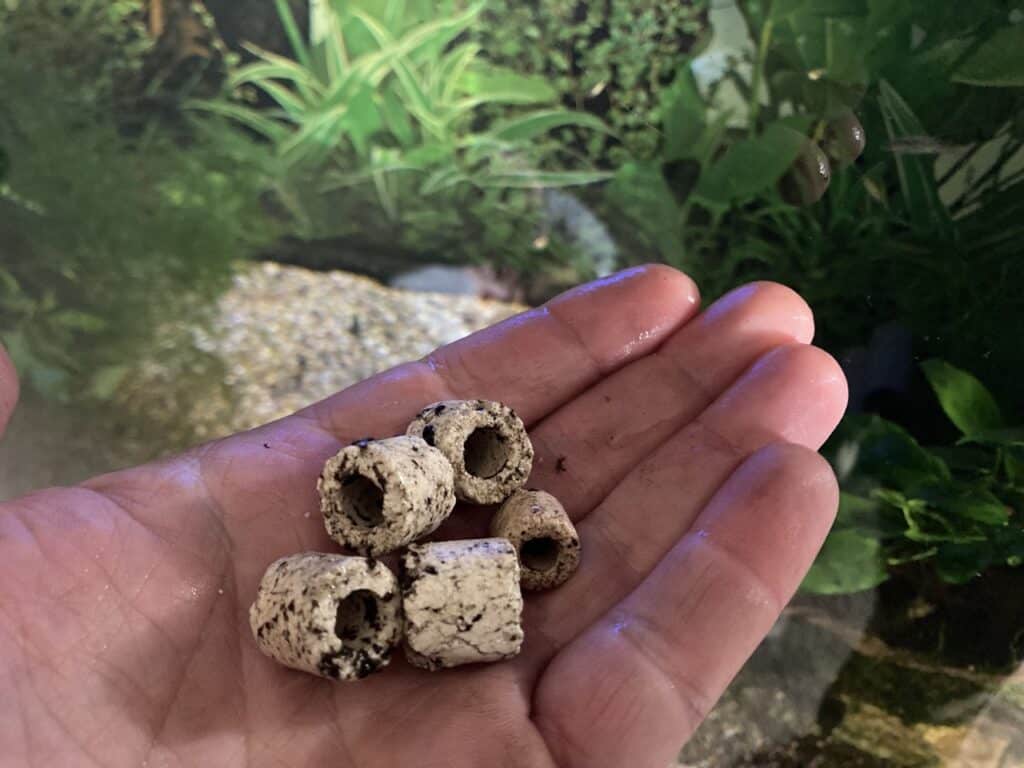
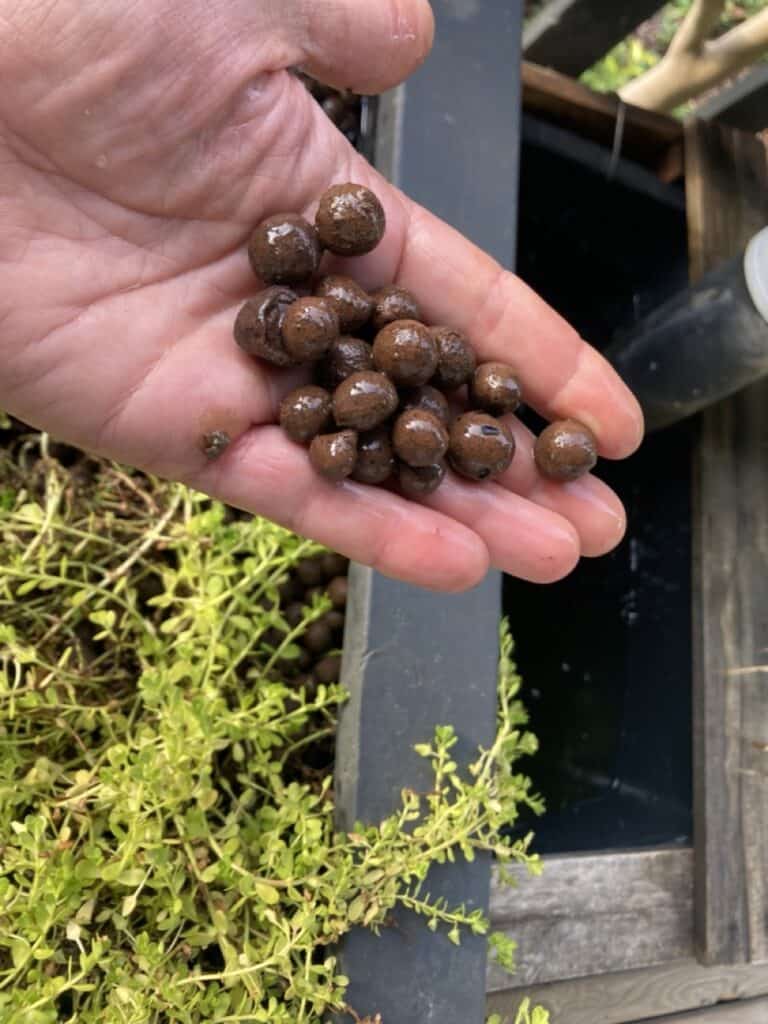
Both media are light weight which makes them well suited to filters that sit above a pond. I use clay noodles a lot in my aquariums, you’ll also often see them in pressure filters.
The clay balls, I really like when I create my mini bog filters, these sit above my container ponds. Below is a video on how I set up a little mini bog, if you’re interested.
Both media are well suited to slower flow setups, like bog filters or trickle filters. For a pond, I prefer the clay balls or LECA you can check out the prices here (Amazon link).
Slower flow filters, like a bog filter can also trap some of the sediment that a high flow filter will let pass. If you want to learn more about bog filters, this article here (the power of bog filters), is a great place to start.
Clay balls are very popular in aquaponics. An aquaponic grow bed is essentially a bog filter but if you add a bell-siphon (amazon link), you can flood and drain the grow-bed and pretty much grow any plant you like.
The bell siphon allows the filter to fill up and drain automatically, this ensures the roots get plenty of oxygen.
Filter Mats
My favourite filter mats are Matala and Japanese mats, they are made from open-cell foam and their structure provides plenty of surface area. They also have the added benefit that they can trap sediment.
These mats are versatile, acting as pre-filters and enhancing biological filtration. They are easy to clean and can be reused multiple times, offering a practical solution for various pond sizes.
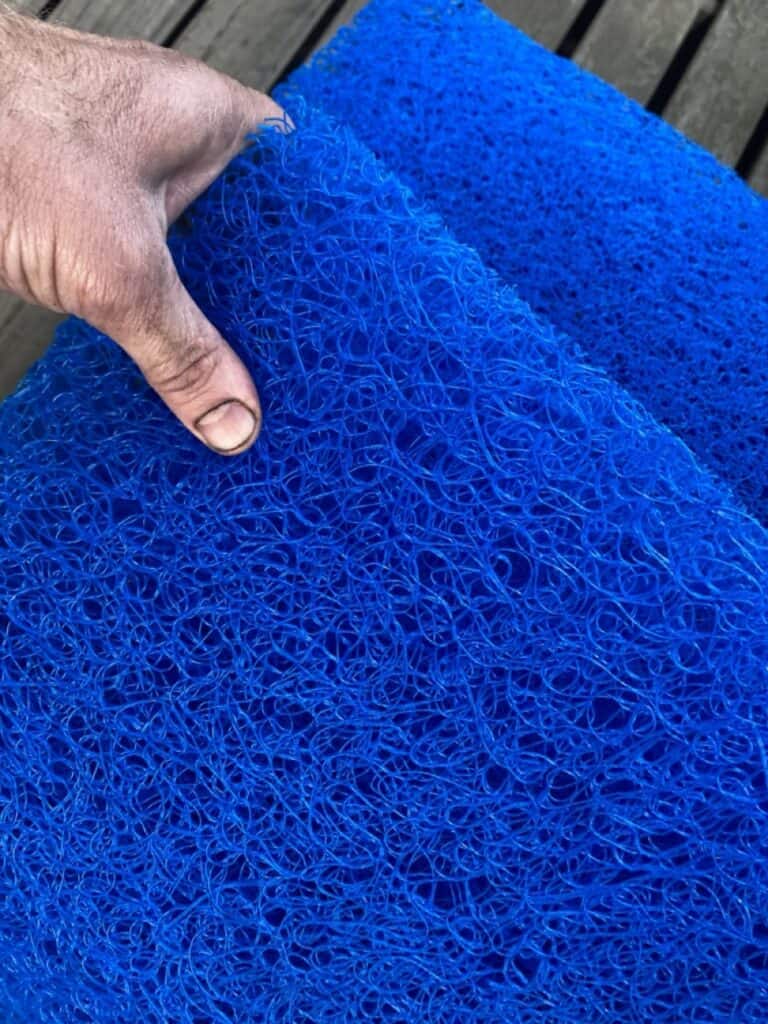
I find they are best used in conjunction with bio balls, that way even if the mats become saturated with organic material the bio balls are still free of debris and providing ample space for nitrifying bacteria.
When filter media becomes clogged the biological capacity to filter water diminishes.
Because I often use these as pre-filters on my little DIY skimmers, or over the pumps in my smaller setups- I have links to them on my helpful products page.
K1 Media
This is a very popular media among koi keepers. Where I live in Australia, it is illegal to keep koi so I haven’t done a lot of experimenting with this media.
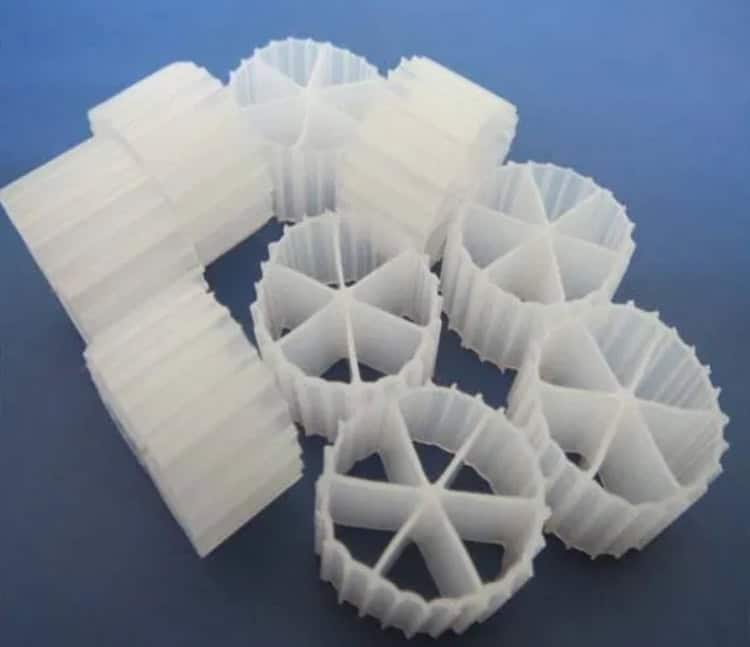
K1 media (Amazon link) is designed for moving bed filters where the media is constantly agitated, ensuring high oxygen availability and preventing clogging.
The highly oxygenated water means that vast amounts of ammonia can be converted very quickly. This is obviously very useful in pond with large fish, lots of waste and lots of feeding.
Like the bio balls, the high flow and highly oxygenated water means that nitrate will remain, again this needs to be removed via plants or diluted via water changes.
Rock and Pebbles
Rock and pebble are the most common filter media in my ponds. Compared to specialised filter media, rocks and pebbles are incredibly affordable (at least where I live).
Because my favourite pond filter is a bog filter, the size of my filter is quite large in comparison to more traditional filters. Therefore, having a cheaper alternative is essential.
I find my bog filters reduce the amount of nitrate every time.
Using natural materials, like rock and pebble enhances the look of your pond, they blend seamlessly into the pond environment.
I use rock and pebble inside my ponds as it makes the pond look natural, it protects the liner, it provides a substrate to grow plants and of course, it increases the surface area available for nitrifying bacteria.
Smaller rocks have more surface area, but are more prone to clogging. In my large bog filters I layer the rocks to optimise surface area and make cleaning easy.
Throughout the website and on my youtube channel, I have loads of videos and articles explaining how to build bog filters, how to maintain them, how to size them, correct flow, layering of the rocks and much more! So feel free to explore.
I also have a downloadable pdf that contains all the formulas I use when I build my ponds.
Anyway I hope this article, the links and videos were helpful. Thanks for reading and happy ponding! Cya!

